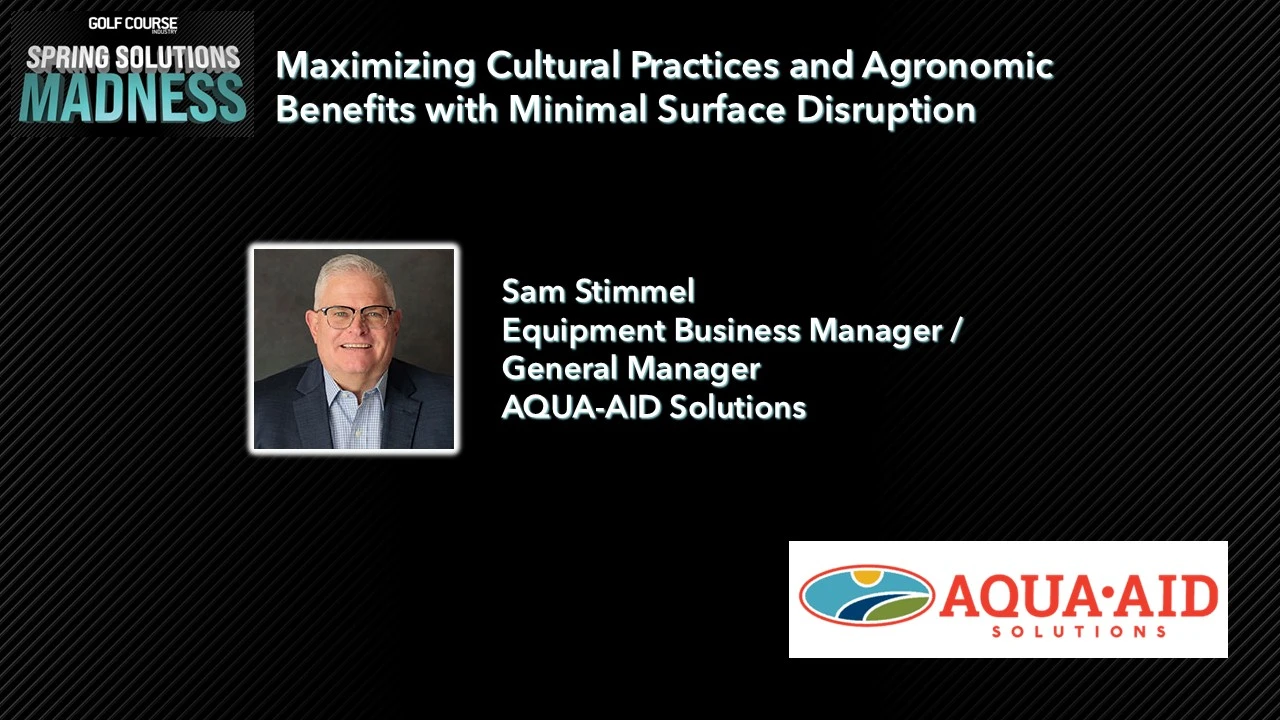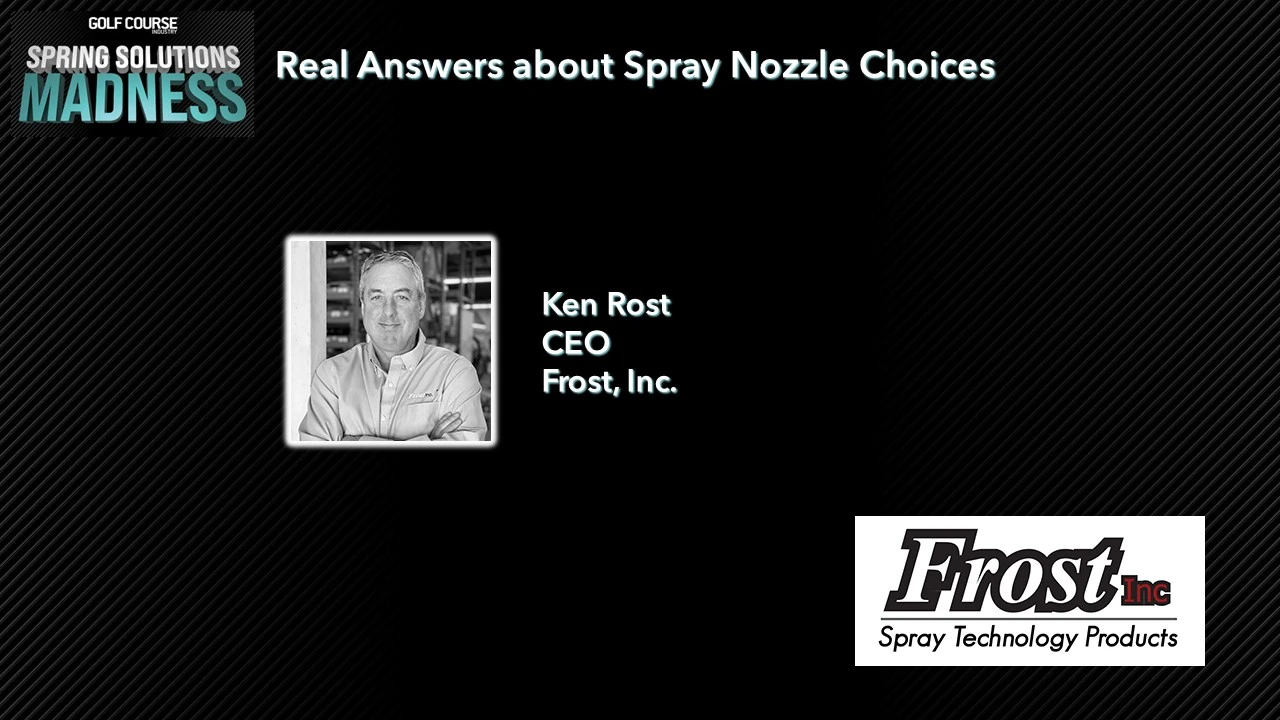

Location, location, location.
Those are, of course, three of the more important words for any property agent, a triplespeak trope frequently — and also erroneously — attributed to the late English real estate magnate Harold Samuel. They are also three of the more inescapable challenges for Ryan Segrue, the director of green and grounds at Shorehaven Golf Club in Norwalk, Conn., an almost-century-old oasis set against the Long Island Sound in the heart of the private-club-rich New York City metro region.
“We’re just surrounded by world-class golf courses,” Segrue says. “You can be at any number of top-100 courses in an hour, and our members play all over the place — and they come back here and expect the same.”
Segrue is five seasons into his run at Shorehaven, originally designed by Willie Park Jr. and opened back in 1923, and he considers the superintendents and directors at those neighboring clubs to be collaborators rather than competitors — especially the veterans who might have worked in the industry longer than he has been alive.
“They push each other to excel,” says John Bresnahan, a territory manager for Syngenta who has worked the last couple decades around the region. “There is a lot of collaboration among superintendents, he’s right, but they push each other to provide better conditions for the members.”

“There’s so much talent and so much experience in the area,” Segrue says. “I’m a younger guy, so I’m constantly talking to the older guys, finding out what they’re doing and what they’re using, and just trying to stay on par. Our members don’t play on a Donald Ross or an A.W. Tillinghast, but why can’t our conditions be the same?”
That is perhaps the biggest reason Segrue employs a suite of Syngenta products across the club’s compact hundred acres, from Ference insecticide, to Daconil Action and Secure Action fungicides, to the more recent addition of Appear II, the pigmented phosphite fungicide, to control various turf diseases and enhance turf quality at the same time.
“We’re constantly pushing the turf, we’re striving to be the best we can be,” Segrue says. “We cut low, we roll all the time, we use low amounts of nitrogen, and since I switched to Appear II, the summer stress tolerance is huge because you can barely tell the stress is there. If you do get a little, you spray on Monday, you throw Appear II in the tank, by Wednesday, you feel like you’re back at square one with your greens healthy and ready to go for the next weekend.”
Segrue sprays Appear II every week from the middle of June through Labor Day, tank mixing it every other week with Daconil Action or Secure Action, among other fungicides. The eradication of anthracnose, which Segrue says he last spotted on his greens three years ago, is a big benefit, as is the greens color. “My members in the past have commented about how I would quote unquote paint the greens,” Segrue says. “Since I switched to Appear II, I don’t hear any of that. I don’t even think the members know that I use it. It’s that natural and that good of a color. It’s not overbearing, it doesn’t stand out. It just kind of blends into the natural topography of the course, blends right into my fairways.”
Segrue turns to Ference to combat the “menace” that is the annual bluegrass weevil. “I use it on my greens, collars and approaches, and you can definitely draw a line where we stop using it,” he says. “When you have that distinct line and you see damage two, three feet away, it’s easy to tell when a product works.”
He uses Posterity, too, especially after a hammering of dollar spot in recent seasons. “We just went through the hottest, wettest July on record in Norwalk,” Segrue says. “We had eight inches of rain and I think the average temperature was somewhere around 85 degrees, so prime dollar spot conditions. I haven’t seen a speck of it out there.”
Segrue is working with a larger budget than most clubs — evidenced by the generally higher cost of living along the coast and the more than $20 million in capital improvements poured into the property during the last five years — but his creativity only enhances his tools.

That creativity included opening the club’s shoreline and reintroducing views of the Long Island Sound thanks to the removal of almost 100 trees, “a lot of oaks and swamp maples planted in weird spots,” Segrue says, and also about three-dozen pines, many of them hundred-footers planted during the woody wave of the late 1960s and early ’70s. “That was in vogue at the time,” he says. “They basically walled off every fairway to make it its own little area.”
The removal started almost a decade ago, before Segrue arrived after three years with Valley Crest Golf Maintenance, five years as an assistant at The Stanwich Club and one year at New Haven Country Club, but the first wave was “a little too selective,” he says. So during one packed offseason, “we just ripped the Band-Aid off, just clear cut ’em, took every one of ’em down in one year.”
Segrue shared that news when more members than not were out of the city and even out of the state, unable to visit the property and voice their concerns in person. Segrue has shared news in recent years through a private Twitter account, in newsletter and emails, even in an app, but the most effective channel, he has found, has been open town hall meetings. “The ones who care will come,” he says. “If they hear it come from me and they hear the reasons why we want to do something and understand my perspective, it’s a lot easier to get a consensus.” Segrue says he would have incorporated more town halls prior to the removal process, though after a wave of concern and complaints, he has received only praise after showing views last enjoyed almost half-a-century ago.
“It’s a cool, unique track,” Bresnahan says, “and with the vistas he’s improved, being able to see the shoreline, it’s pretty slick. It’s a good golf design made better by the playing conditions. And, of course, taking down those trees vastly improves your growing environment for the turf.”
Communication is always key, whether with members or area superintendents with ideas and experience. You just need to find the best channels.
“I think we’re all in this together,” Segrue says. “When my members go play a really high-end course and come back and say our conditions are just as good, that’s where I get my pride from. It’s a driving force in why I do what I do. I want to be the best. I want my members to be proud of what they have.
“I would never put myself in competition with the guys around here. We’re all friends, we help each other when we can.”
Proof that, with the proper approach, your location can help far more than hinder.

Explore the September 2019 Issue
Check out more from this issue and find your next story to read.
Latest from Golf Course Industry
- Tartan Talks 105: Nathan Crace and Todd Quitno
- Disease Discussion 24: Let the turf talk to you
- From the publisher’s pen: Foggy intrigue
- USGA releases Water Conservation Playbook
- Vilamoura Golf courses awarded GEO Certified status
- GCSAA’s Health in Action 5K/2K reaches fundraising goal
- Landscapes Golf Management to participate in data analyzation initiative
- Reel Turf Techs: Carl Michael





